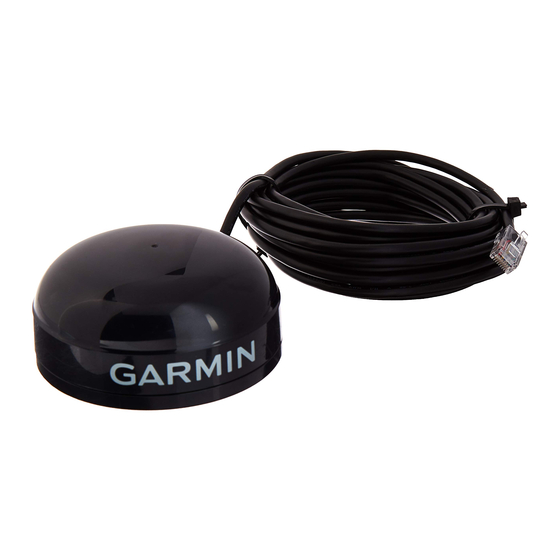Operation
Using the
GPS 17
F
The following NMEA transmit-
ted sentences are enabled at
the factory: GPGGA, GPGSA,
GPGSV, GPRMC, PGRMB,
PGRME, PGRMT, and PSLIB
12
Initial reception of the WAAS signal may take up to
15-20 minutes, then 1-2 minutes afterwards. When the GPS
satellites are receiving WAAS differential correction, a 'D' will
appear in the signal bar of the sky view and '2D or 3D Differ-
ential' will appear in the receiver status. To learn more about
the WAAS system, its satellite positions and current state of
development, visit the FAA web site (http://gps.faa.gov).
Interfaces
The GPS 17 serial Port 1 interface protocol design is
based on the National Marine Electronics Association' s
(NMEA) 0183 ASCII interface specification, which is fully
defined in "NMEA 0183, Version 2.0" and the Radio Techni-
cal Commission for Maritime Services "RTCM Recommended
Standards For Differential Navstar GPS Service, Version 2.1,
RTCM Special Committee No. 104". Contact information to
obtain copies of the NMEA and RTCM specifications may be
found on page 5.
Port 2 is designated for RTCM data input only. Output
on Port 2 is reserved for future use.
The GPS 17 interface protocol also transmits additional
information using the convention of Garmin proprietary
sentences ($PGxxx). Complete information on GPS 17 capa-
bilities, data transfer, NMEA sentence formats and descrip-
tions can be found in the "GPS 17 Technical Specifications"
(190-00228-20). You may order a copy of these specifica-
tions from Garmin or your Garmin dealer, or you may also
download a copy from the manuals section of the Garmin
web site at www.garmin.com/support/userManual.html.
The GPS 17 Port 1 is capable of transmitting the follow-
ing NMEA data sentences:
GPALM, GPGGA, GPGSA, GPGSV, GPRMC, GPVTG,
GPGLL, PGRME, PGRMF, PGRMT, PGRMV, and PGRMB
The GPS 17 Port 1 is capable of receiving the following
NMEA data sentences:
GPALM, PGRMI, PGRMC, PGRMC1, PGRMO, and PSLIB.

